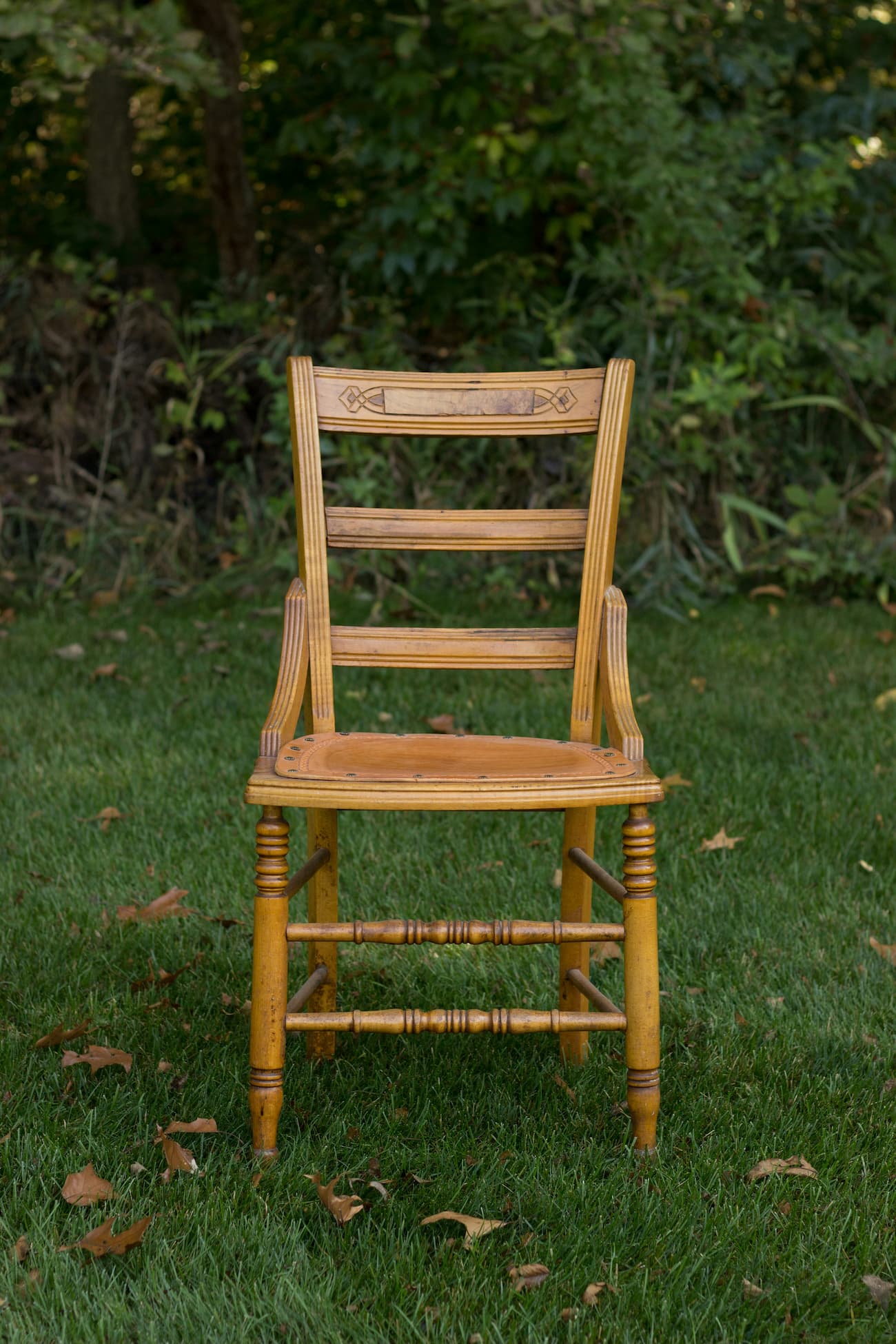Picture your current home exactly as it stands today, then imagine walking through it twenty years from now. Which pieces would still feel fresh and relevant? Which would appear embarrassingly dated? This mental exercise—the 20-year test—reveals more about quality and timeless design than any showroom visit or magazine spread ever could.
In our age of rapid trend cycles and disposable culture, the ability to identify furnishings that will age gracefully has become both more challenging and more valuable than ever. The pieces that pass this test share certain characteristics that transcend fleeting fashion, rooting themselves in fundamental principles of proportion, materials science, and human psychology that remain constant regardless of changing tastes.
The Anatomy of Timeless Design
Truly timeless pieces possess an almost mathematical quality—proportions that feel inherently correct, materials that improve with age, and forms that serve function so perfectly that style becomes inseparable from purpose. These characteristics didn’t emerge accidentally; they reflect centuries of refinement in human understanding of what works both practically and aesthetically.
Proportional Harmony The golden ratio appears repeatedly in furnishings that age well, not because designers consciously invoke it, but because these proportions resonate with patterns deeply embedded in human perception. A dining table with legs positioned at 1.618 times the distance from the corners feels more balanced than alternatives, regardless of style or material.
Similarly, seating that reflects human anthropometric data—the actual measurements of how bodies work—remains comfortable across generations while trendy ergonomic experiments often prove short-lived. The reason Chippendale chairs still function perfectly after 250 years isn’t nostalgia; it’s because their proportions align with unchanging human physiology.
Material Honesty Pieces that age gracefully express their materials honestly rather than disguising them. Solid timber furniture that celebrates wood grain will outlast pieces that paint over or fake natural characteristics. Stone that looks like stone, metal that behaves like metal, leather that develops the rich patina only genuine hide can achieve—these materials improve with time because they’re being true to their nature.
Conversely, furnishings that rely on artificial effects—faux finishes, plastic made to look like wood, synthetic materials mimicking natural ones—typically reveal their deception more clearly with age, becoming less rather than more appealing over time.
The Architecture of Longevity
Understanding how quality construction contributes to graceful aging requires looking beyond surface appearances to examine the underlying structures that determine long-term performance.
Joinery That Endures Traditional joinery techniques like mortise and tenon, dovetails, and finger joints create furniture that actually tightens with age as materials settle and adjust. These methods distribute stress across broader areas than modern mechanical fasteners, preventing the loosening and failure that plague lesser construction.
Quality contemporary furniture often combines traditional joinery principles with modern adhesives and precision manufacturing, creating hybrid approaches that offer the best of both worlds. The key is recognizing construction that works with rather than against natural material movement.
Engineered Flexibility The best furniture anticipates and accommodates change rather than rigidly resisting it. Solid wood pieces include expansion joints and floating panels that allow seasonal movement without cracking. Metal components are designed to flex slightly under load rather than transferring stress to connection points.
This engineering approach extends beyond furniture to hardware, lighting, and architectural elements. The pieces that age best include built-in accommodation for the reality that materials change, buildings settle, and usage patterns evolve.
Identifying Quality in an Age of Imitation
Modern manufacturing can create convincing imitations of quality construction, making it crucial to understand the subtle indicators that distinguish genuine quality from sophisticated fakery.
Weight and Balance Quality pieces typically feel substantial in ways that go beyond simple mass. A well-made drawer doesn’t just weigh more than a cheap alternative—it feels balanced when opened, with weight distributed to create smooth operation rather than resistance. This balance results from precision engineering that considers the entire operating system rather than just minimizing material costs.
Surface Finish Quality Run your hand across a truly quality piece and notice the surface texture. Quality finishes feel smooth and consistent without being slippery or artificial. They show tool marks that indicate hand finishing rather than the perfectly uniform surfaces that reveal machine sanding. These subtle textures not only feel better but also hide minor wear and aging better than perfectly smooth surfaces.
Edge Treatment and Details Examine how edges are treated, how joints meet, and how details are resolved. Quality pieces resolve these intersections elegantly, with clean lines and precise fits that indicate careful engineering and skilled execution. Cheap furniture often reveals its nature in poorly resolved details—rough edges, gaps in joints, or hardware that doesn’t align properly.
The Style Spectrum: Navigating Fashion vs Function
Understanding where furnishings fall on the spectrum between timeless function and fashionable form helps predict their aging trajectory. The pieces that age best typically emphasize function, allowing style to emerge from purposeful design rather than imposed decoration.
Classic Modern vs Contemporary Trendy There’s a crucial distinction between classic modern design and contemporary trends. Classic modern pieces—think Eames chairs, Noguchi tables, or Jacobsen lighting—derive their appeal from functional innovation expressed through beautiful form. They remain relevant because they solve problems elegantly.
Contemporary trendy pieces often prioritize visual impact over functional refinement, creating dramatic short-term appeal that may not sustain long-term use. The test is simple: does the piece work better because of its distinctive design, or does the design exist primarily for visual effect?
Pattern and Color Considerations Strong patterns and saturated colors age differently than neutral alternatives, but this doesn’t automatically disqualify them from long-term relevance. The key lies in whether patterns and colors serve larger design purposes or exist merely as decoration.
Patterns that reference natural forms—botanical motifs, geometric abstractions of landscape, or textures that echo natural materials—tend to age better than patterns that reference pop culture or abstract trends. Similarly, colors that exist in nature often maintain appeal longer than synthetic hues that feel obviously artificial.
Investment Strategies for Long-term Satisfaction
Building a collection of furnishings that age gracefully requires strategic thinking about where to invest heavily and where to accept shorter lifespans.
Core vs Accent Philosophy Identify the pieces that form your home’s functional and aesthetic core—seating, tables, storage, lighting infrastructure—and invest heavily in quality options for these elements. These core pieces should be selected using the strictest 20-year test criteria, prioritizing materials, construction, and proportions over current style trends.
Accent pieces can afford to be more fashionable and less permanent, allowing you to refresh your spaces without replacing expensive foundational elements. This approach provides style flexibility while maintaining long-term stability.
The Upgrade Path Consider how pieces might evolve or be upgraded over time. Quality furniture often accepts modification—reupholstering, refinishing, or hardware updates—that can extend relevance without requiring complete replacement. Choose pieces whose fundamental bones are strong enough to support these transformations.
Material Selection for Graceful Aging
Different materials age in dramatically different ways, and understanding these patterns helps predict long-term satisfaction with furnishing choices.
Timber: The Gold Standard Quality hardwoods improve with age, developing rich patinas and character that synthetic alternatives cannot replicate. The key is selecting properly dried, quarter-sawn timber with grain patterns that complement rather than fight the piece’s design. Avoid veneers over particleboard cores, which typically fail at edges and joints as adhesives age.
Metal: Patina vs Corrosion Some metals develop beautiful patinas that enhance their appearance, while others simply corrode. Brass, bronze, and certain steel alloys age gracefully, developing complex surface characteristics that add rather than subtract visual interest. Aluminum and stainless steel maintain consistent appearances but don’t improve with age.
Stone: Geological Time Scales Natural stone operates on geological time scales that make human lifespans seem momentary. Quality stone pieces can literally last centuries while developing subtle character changes that enhance rather than diminish their appeal. The key is selecting appropriate stone types for specific applications and accepting that minor changes are part of stone’s natural character.
Leather: Living Material Quality leather is perhaps the ultimate aging material, developing rich patinas and supple textures that improve dramatically over time. However, this applies only to full-grain leather with natural finishes. Corrected grain leather, plastic-coated alternatives, or heavily processed hides often deteriorate rather than improve with age.
Maintenance Philosophy for Longevity
Pieces that age gracefully typically require different maintenance approaches than those designed for pristine preservation. Understanding these requirements helps make informed choices about long-term ownership satisfaction.
Preventive vs Corrective Care The best aging pieces benefit from gentle, consistent care rather than intensive restoration efforts. Regular dusting, appropriate humidity control, and protection from extreme temperature changes often prove more valuable than periodic deep cleaning or refinishing.
Accepting Character Development Graceful aging requires accepting that pieces will change over time. The goal isn’t maintaining pristine newness but guiding aging in positive directions. This might mean embracing patina development on brass, accepting minor wear patterns on leather, or allowing timber to develop subtle color changes.
The Psychology of Long-term Satisfaction
Understanding your own psychological relationship with change and aging helps predict satisfaction with different furnishing choices. Some personalities thrive on pieces that evolve dramatically, while others prefer materials that maintain consistent appearances.
Emotional Attachment Through Time Pieces that age gracefully often develop stronger emotional connections over time, as their changing characteristics reflect shared history with their owners. This emotional appreciation can overcome purely aesthetic considerations, making pieces more rather than less beloved as they age.
The Patina Premium In many categories, aged pieces command higher prices than new alternatives, reflecting market recognition that some materials genuinely improve with time. Understanding this dynamic helps inform investment decisions and maintenance approaches.
Environmental Factors in Aging
Different environments dramatically affect how furnishings age. Understanding your specific conditions helps predict aging patterns and inform appropriate material choices.
Climate Considerations Humid climates affect organic materials differently than dry ones. Coastal environments introduce salt air that accelerates certain aging processes while inhibiting others. Sun exposure, temperature fluctuations, and air quality all influence how materials evolve over time.
Usage Patterns Heavy-use items age differently than display pieces. Consider how each piece will actually be used over its intended lifespan and select materials and construction accordingly. A coffee table in a family room faces different challenges than one in a formal living space.
The Confidence Test
Perhaps the most reliable predictor of graceful aging is your own confidence in a piece. If you can honestly imagine still appreciating its fundamental qualities in twenty years—regardless of style changes—it likely possesses the timeless characteristics that ensure long-term satisfaction.
This confidence often emerges from recognizing quality that transcends fashion. When you encounter a piece whose proportions feel inherently correct, whose materials seem honest and appropriate, and whose construction promises decades of reliable service, trust those instincts. They’re often recognizing qualities that ensure graceful aging.
The 20-year test isn’t about predicting future trends or avoiding all risk of obsolescence. It’s about identifying pieces whose fundamental qualities—proportion, materials, construction, and purposefulness—transcend temporary fashion to offer enduring satisfaction. In a world of rapid change, these pieces provide stability, beauty, and the deep satisfaction that comes from living with objects that improve rather than deteriorate over time.

